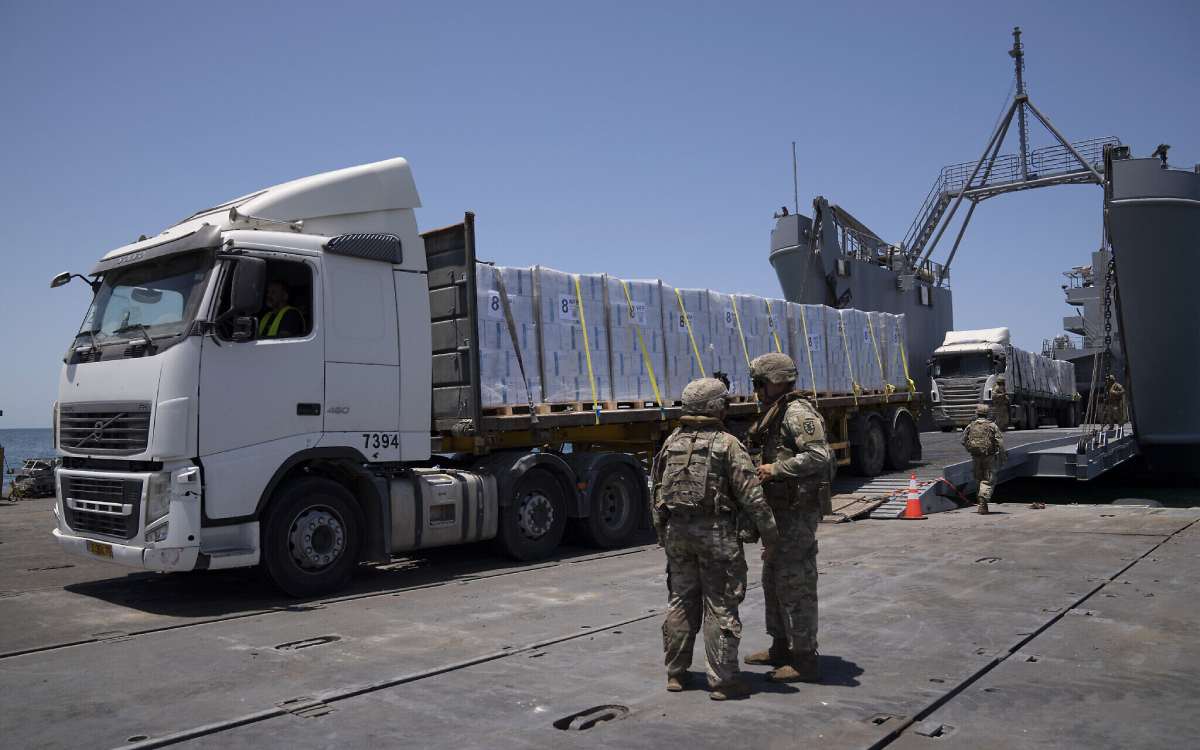US Removes Gaza Aid Pier Again Due to Weather and May Not Reinstall It
In a recent development, the United States has once again removed the aid pier in Gaza, citing adverse weather conditions as the primary reason. This decision has raised concerns among humanitarian organizations and local authorities, who rely heavily on the pier for the delivery of essential aid to the region.
Background
The aid pier in Gaza has been a critical infrastructure for delivering humanitarian assistance to the region. Established to facilitate the flow of goods and services, it has played a vital role in supporting the local population, especially during times of crisis. However, the pier has faced numerous challenges, including security concerns, political tensions, and now, increasingly, weather-related issues.
Weather-Related Challenges
The region’s weather conditions have posed significant challenges to maintaining the aid pier. High winds, rough seas, and other adverse weather phenomena have repeatedly damaged the structure, necessitating its removal and repair on multiple occasions. The latest removal, prompted by a forecast of severe weather, underscores the ongoing vulnerability of the pier to natural elements.
Humanitarian Impact
The removal of the aid pier has immediate and profound implications for the delivery of humanitarian aid. The pier serves as a critical point for unloading supplies such as food, medical equipment, and other essential goods. Without it, the logistics of delivering aid become significantly more complex and time-consuming, potentially leading to delays that could exacerbate the already dire conditions in Gaza.
Humanitarian organizations have expressed concern over the potential long-term impact of the pier’s removal. “The aid pier is crucial for our operations. Without it, we face significant challenges in delivering timely and effective aid to those in need,” said a spokesperson for a leading international aid organization.
Future Uncertainty
Adding to the concern is the uncertainty surrounding the pier’s future. US officials have indicated that the decision to reinstall the pier is not guaranteed. Factors such as ongoing weather risks, security concerns, and political considerations will all play a role in determining whether the pier will be reinstalled.
“The safety of our personnel and the effectiveness of our aid operations are our top priorities,” stated a US government official. “We are evaluating all factors to make a decision that balances these priorities with the urgent need for humanitarian aid.”
Calls for Alternative Solutions
In light of the situation, there have been increasing calls for alternative solutions to ensure the continued flow of aid to Gaza. Suggestions include the development of more resilient infrastructure, the use of alternative delivery routes, and increased collaboration with local authorities and international organizations to find sustainable solutions.
“We need to think creatively and collaboratively to address these challenges,” said an expert in humanitarian logistics. “The goal must be to ensure that aid reaches those who need it most, regardless of the obstacles.”
Conclusion
The removal of the Gaza aid pier due to weather conditions highlights the fragile nature of humanitarian infrastructure in conflict-prone regions. As the situation evolves, it remains crucial for all stakeholders to work together to find viable solutions that ensure the uninterrupted delivery of aid to the people of Gaza. The coming months will be critical in determining the future of the aid pier and the broader efforts to support the region’s humanitarian needs.
